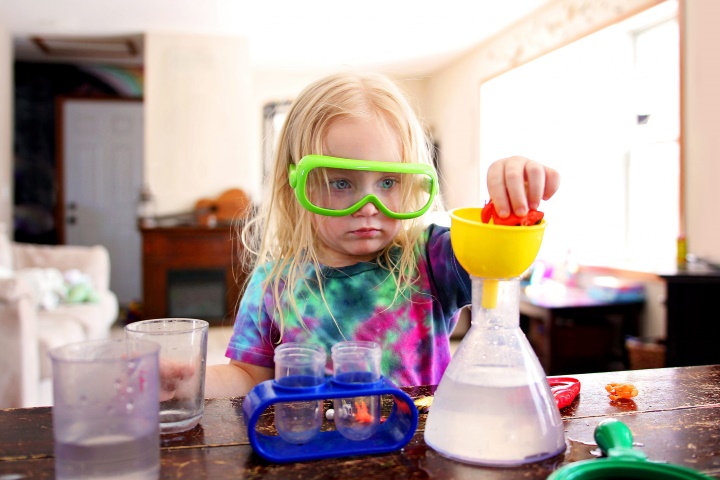Children are natural explorers, brimming with curiosity about the world around them. Harnessing this curiosity and channeling it into engaging science experiments not only offers fun and entertainment but also nurtures a love for learning. Science experiments allow kids to ask questions, make predictions, and uncover answers through hands-on experiences. Here, we present seven captivating science experiments that are sure to keep your child’s curiosity alive and thriving.
Nurturing Curiosity: 7 Science Experiments to Spark Your Child’s Wonder
Bubbling Volcanoes: The Magic of Baking Soda and Vinegar
Materials:
- Clay or playdough
- Baking soda
- Vinegar
- Dish soap (optional for extra froth)
- Food coloring (optional for lava effect)
Instructions:
- Mold the clay or playdough into a volcano shape on a tray.
- Add a teaspoon of baking soda into the crater of the volcano.
- Pour vinegar into the crater and watch the eruption occur.
- For a colorful lava effect, add a few drops of food coloring to the vinegar.
- To create extra froth, add a drop of dish soap to the mixture.
Rainbow Milk Swirls: Exploring Surface Tension
Materials:
- Milk
- Plate
- Food coloring (multiple colors)
- Dish soap
- Cotton swabs
Instructions:
- Pour a thin layer of milk onto the plate.
- Add drops of different-colored food coloring onto the milk’s surface.
- Dip a cotton swab into dish soap and touch it gently to the milk’s surface.
- Watch in amazement as the colors swirl and move due to the breaking of surface tension.
Growing Crystals: Unveiling the Beauty of Chemistry
Materials:
- Epsom salt or sugar
- Water
- Glass or jar
- String or pipe cleaner
Instructions:
- Heat water until hot but not boiling.
- Stir in Epsom salt or sugar until no more can dissolve (super-saturated solution).
- Attach a string or pipe cleaner to a pencil and suspend it in the solution.
- Place the glass or jar in a cool area and observe as crystals form over several days.
Static Electricity Butterfly: Electrifying Exploration
Materials:
- Butterfly shape cut from paper
- Thread
- Balloon
Instructions:
- Attach a piece of thread to the butterfly shape.
- Rub the balloon against hair or clothing to create static electricity.
- Hold the charged balloon near the butterfly, and watch it move and flutter due to static attraction.
Sink or Float: A Lesson in Density
Materials:
- Various household objects (e.g., toy, coin, cork, paperclip)
- Container of water
Instructions:
- Fill a container with water.
- Choose different objects and predict whether they will sink or float.
- Test each object by placing it in the water and observe the outcome.
- Discuss why some objects float while others sink, introducing the concept of density.
Egg in Vinegar: Unveiling the Power of Acids
Materials:
- Raw egg (in shell)
- Vinegar
- Clear container
Instructions:
- Place the raw egg in a clear container.
- Pour enough vinegar to cover the egg.
- Observe as the shell reacts with the acid, causing it to dissolve over a day or two.
- Gently remove the egg and feel its now rubbery texture.
Solar-Powered S’mores: Harnessing the Sun’s Energy
Materials:
- Cardboard box
- Aluminum foil
- Plastic wrap
- Black construction paper
- Marshmallows and chocolate
Instructions:
- Line the inside of a cardboard box with aluminum foil.
- Cover the top of the box with plastic wrap, securing it in place.
- Line the bottom of the box with black construction paper.
- Arrange marshmallows and chocolate on the black paper.
- Place the box in direct sunlight, ensuring the plastic wrap faces the sun.
- Wait for the sun’s energy to melt the ingredients into delicious s’mores.
These captivating science experiments provide a fantastic opportunity to engage children’s curiosity while introducing them to fundamental scientific concepts. As they observe, predict, and explore, kids develop critical thinking skills and a deeper appreciation for the world around them. So gather the materials, embark on these scientific journeys, and watch as your child’s curiosity ignites into a lifelong love of learning and discovery.













